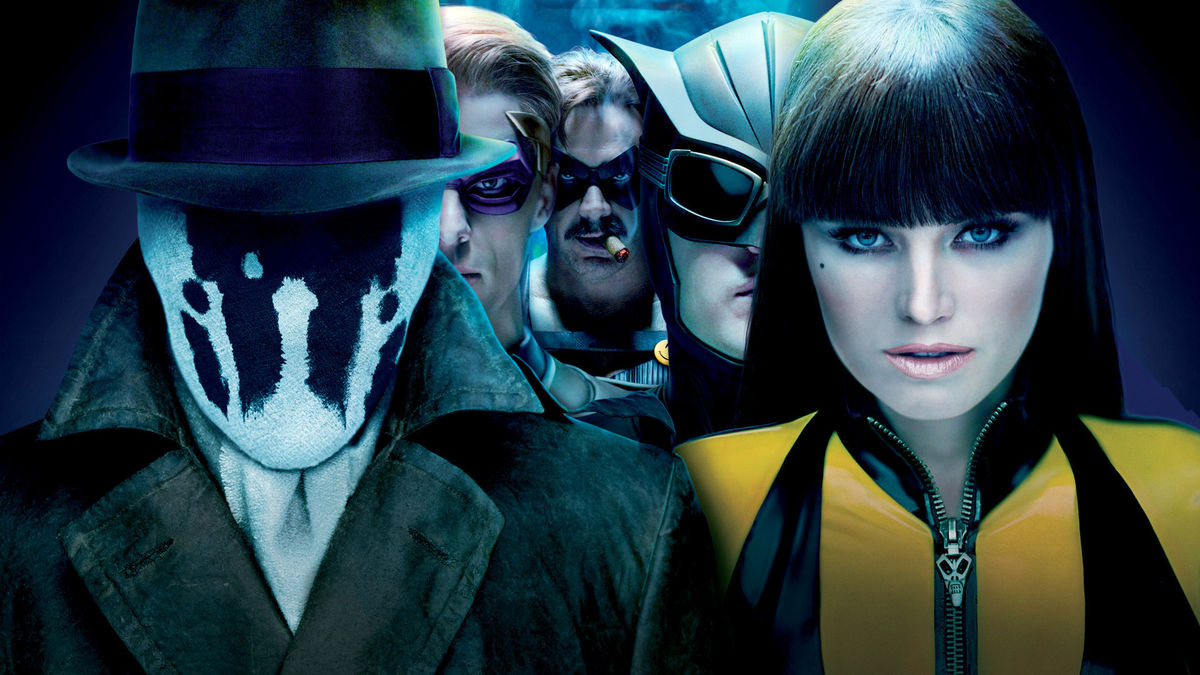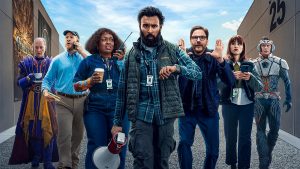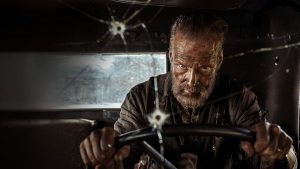
In the trailer for only his third directorial feature, filmmaker Zack Snyder was heralded with the title of “visionary.” In retrospect, you might label that many things: aspirational, hubris, or just plain, good old-fashioned marketing copy. Whatever the case might be, it had a point. Love or hate Snyder’s aesthetic, his films are visually and instantly recognizable, and they’ve found a fervent audience that is still tens of millions strong more than a decade after this sizzle reel.
But all that would come later. Back in 2009, the moniker was adorned on Snyder during the marketing push for Watchmen, the ambitious and sprawling attempt to turn Alan Moore and Dave Gibbons’ most influential graphic novel from the 1980s into a three-hour film (or about two hours and 45 minutes in the case of the original theatrical cut). The film could never lose points for daring, but it was analyzed mercilessly by critics and even audiences in ’09 when the pic garnered an anemic “B” CinemaScore from moviegoers polled during its opening weekend. This would turn out to be prelude to a wobbly box office performance of $185 million worldwide, a far cry from what Snyder’s 300 earned three years earlier with its $456 million cume.
Still, some might call Snyder’s Watchmen ahead of its time. Christopher Nolan apparently is one of them. Indeed, in a new profile on Snyder for The Hollywood Reporter, Nolan provided context on Snyder’s career, including why he thinks Watchmen is so underrated.
“I’ve always believed Watchmen was ahead of its time,” the Oppenheimer director said in an email interview. “The idea of a superhero team, which it so brilliantly subverts, wasn’t yet a thing in movies. It would have been fascinating to see it released post-Avengers.” He’s not wrong.
There will of course always be the eternal debates which trail Snyder’s Watchmen movie. Does it genuinely reflect the political perspective and satirical subtext of Moore and Gibbons’ book or just mechanically replicate those elements? Is it a faithful adaptation to Moore’s vision or a slavish recreation unable to balance its own cinematic structure? Also, just how many shots of blue phalluses are too many? But if one sidestepped those for just a moment and instead focused on the movie’s context within the superhero genre, the truth is Watchmen was quite forward-looking for a film movement that was only beginning to reach peak dominance in Hollywood.
Adapted with excessive fidelity to the graphic novel (or at least the images and words used therein), Snyder’s Watchmen is a film that amusingly presupposes general audiences were as familiar with the concepts of superhero teams and lore as a general, adult comic book reader circa 1986. Take the Ozymandias character, for instance. Clearly an amalgamation of Batman, Reed Richards of the Fantastic Four, and several other famous superhero archetypes, Moore and Gibbons’ Adrian Veidt is a super-genius who understandably (at least at first) uses his massive intellect to aspire to more than stop petty crimes. Instead he retires to an icy fortress in Antarctica that is part Fortress of Solitude, part Avengers Tower, and part Karnak from actual antiquity. He also keeps a giant mutated sabertooth tiger (I think) that is never explained. Not even once.
Snyder adapted this background part and parcel. However, audiences who had only watched superhero movies in the 2000s or earlier—even those featuring Batman via Christopher Nolan movies or Reed Richards in Tim Story’s lightweight Fantastic Four flicks—would likely not pick up on the references or ironies. Even Jon Favreau’s Iron Man only come out one year before Watchmen, and back then even Marvel Studios was trying to ground their introduction of Tony Stark into something simulating the real world, with Robert Downey Jr.’s Stark entering the film while surviving the then very active American war zone in Afghanistan.
Audiences were still more than six years away from Stark creating an A.I. that would attempt to lift a city into the sky and drop it like a DIY asteroid in Avengers: Infinity War, and more than a decade out from Stark inventing time travel over a morning cup of joe in Avengers: Endgame because of the shenanigans caused by another product of comic-book genius: Ant-Man and his ability to shrink to the Quantum Realm.
In hindsight, the amount of comic book minutiae and silliness audiences have been inundated with since 2009 is dizzying—suggesting perhaps Snyder’s Watchmen was premature.
This is not to say Snyder failed to make adjustments for audience expectations at that time. The aforementioned Veidt is played in the film by Matthew Goode, and he sports a sculpted rubber suit, complete with prominent nipples, that purposefully echoes the Batman costumes worn by Val Kilmer and George Clooney in the 1990s. Whether by accident or serendipity, Jackie Earle Haley’s Rorschach also sounds suspiciously like Christian Bale’s Dark Knight.
Still, Snyder’s cinematic allusions were largely outside the superhero genre—mimicking Francis Ford Coppola’s infamous Ride of the Valkyries in Apocalypse Now or borrowing from the soundtrack of Mike Nichols’ The Graduate. This too is refreshing 14 years later, as a superhero genre commenting on any other type of cinema has become increasingly rare. For the purposes of adapting Watchmen, however, general audiences being as aware of the clichés and limitations of the superhero genre as adult comic readers would’ve been in the 1980s would have changed the perception of the film entirely.
At its heart, Watchmen (the novel) is a critique of the very notion of a superhero and by extension the visage of 20th century American power and imperialism that Moore posits superheroes were created to reflect. I am not sure if Snyder particularly cared for or fully engaged with that last bit, but he definitely embraced these characters as a subversion of mainstream superhero tropes. But back in 2009, the idea of superheroes interacting with each other—as a team or just in the form of cameoes—was a novelty. Fans were freaking out because Samuel L. Jackson as Nick Fury showed up for five seconds after the credits in Iron Man, and that Downey’s Stark likewise appeared for a few beats (minus any CGI or metal armor) in The Incredible Hulk.
Audiences who have lived through seeing Iron Man, Hulk, and all the rest fight Thanos, or for that matter Batman and Superman fight each other for reasons that are still difficult to fathom in Batman v Superman: Dawn of Justice, might be much more onboard now for a cinematic evisceration of the genre which suggests it is deluded and jejune.
Then again, audiences might have already proved that on the small screen after Damon Lindelof’s much more politically attuned adaptation/sequel of Watchmen hit HBO in 2019. Even so, it’s fun to imagine what might have been if audiences met Doctor Manhattan after hearing Tony Stark boast, “We have a Hulk.”
The post Christopher Nolan Is Right: Zack Snyder’s Watchmen Was Ahead of Its Time appeared first on Den of Geek.





